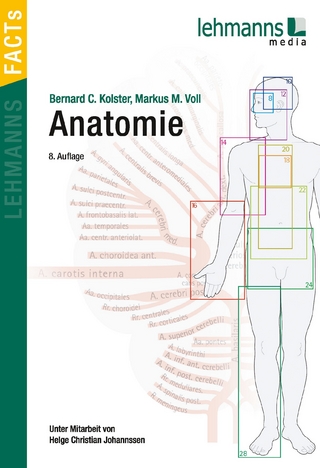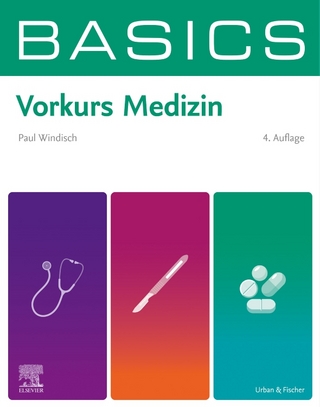
RNA Delivery Function for Anticancer Therapeutics
CRC Press (Verlag)
978-1-032-13518-2 (ISBN)
This book presents an overview of the current status of translating the RNAi cancer therapeutics in the clinic, a brief description of the biological barriers in drug delivery, and the roles of imaging in aspects of administration route, systemic circulation, and cellular barriers for the clinical translation of RNAi cancer therapeutics, and with partial content for discussing the safety concerns. It then focuses on imaging-guided delivery of RNAi therapeutics in preclinical development, including the basic principles of different imaging modalities, and their advantages and limitations for biological imaging. With growing number of RNAi therapeutics entering the clinic, various imaging methods will play an important role in facilitating the translation of RNAi cancer therapeutics from bench to bedside. RNAi technique has become a powerful tool for basic research to selectively knock down gene expression in vitro and in vivo. Our scientific and industrial communities have started to develop RNAi therapeutics as the next class of drugs for treating a variety of genetic disorders, such as cancer and other diseases that are particularly hard to address with current treatment strategies.
Key Features
Provides insight into the current advances and hurdles of RNAi therapeutics.
Accelerates RNAi, miRNAs, and siRNA drug development for cancer therapy from bench to bedside.
Addresses various modifications and novel delivery strategies for miRNAs, piRNAs and siRNA delivery in anticancer therapeutics.
Explores the need for the interaction of hematologists,cell biologists, immunologists, and material scientists in the development of novel cancer therapies.
Describes the current status of clinical trials related to miRNA and siRNA-based cancer therapy
Presents remaining issues that need to be overcome to establish successful therapies.
Prof. Loutfy H. Madkour is a professor of physical chemistry and nanoscience at Tanta University (Egypt). He received his BSc, MSc, and PhD in physical chemistry from the Cairo, Minia, and Tanta universities in Egypt, respectively. He has published 200 peer-reviewed original research articles, 20 review articles, and 8 books. He is an editorial board member of several international journals, including International Journal of Industrial Chemistry (IJIC-Springer), International Journal of Ground Sediment & Water, Global Drugs and Therapeutics, Chronicles of Pharmaceutical Science, Journal of Targeted Drug Delivery, UPI Journal of Pharmaceutical, Medical and Health Sciences, Global Journal of Nanomedicine, Clinical Pharmacology and Toxicology Research, Journal of Pharmacology & Pharmaceutical Research, LOJ Pharmacology & Clinical Research, CPQ Medicine, Pharmaceutical Sciences & Analytical Research Journal, Japan Journal of Research, Organic & Medicinal Chemistry International Journal, Nanotechnology & Applications, Materials Science Journal, Journal of Chemical Science and Chemical Engineering (Journals of– JCSCE), United Journal of Nanotechnology and Medicine, Clinical Practice (Therapy) journal, Journal of Materials New Horizons, Journal of Radiology and Medical Imaging. MedDocs Publishers, World Journal of Pharmacy and Pharmaceutical Sciences WJPPS and Journal of Material Science and Technology Research – RBM.
Chapter 01
Cancer epigenetic mechanisms-DNA methylomes, histone codes and miRNAs
Chapter 02
Circulating miRNAs cancer biomarkers and epigenetic modifications in human cancer
Chapter 03
The role of circulating microRNAs in diagnosis, prognosis and treatment targets of cancer and diseases
Chapter 04
MicroRNAs potential in human cancer as therapeutic targets and novel biomarkers
Chapter 05
Biological function of miRNAs and piRNAs targets in cancer tissues
Chapter 06
Delivery strategies for siRNA and modifications process of RNAi therapeutics for cancer treatment
Chapter 07
Clinical small interfering siRNA–based conjugate systems for RNAi cancer cells therapy
Chapter 08
Potential targeted for siRNA in types of genetic diseases cancer therapeutics
Chapter 09
Recent advanced of microRNA molecules delivery as anticancer drugs
Chapter 10
DNA damaging cancer therapies and FDA novel drug approvals
Chapter 11
Therapeutic potential role of miRNAs in pancreatic and prostate cancer cells
Chapter 12
Regulation of microRNAs and their role in regeneration and cancer diseases
Chapter 13
Novel classes of non-coding RNAs (ncRNAs) and cancer biology therapeutic targets
Chapter 14
Advances in the inhibition and optimization of checkpoint kinases by small molecules for the treatment of cancer
Chapter 15
Recent therapeutic prospects of microRNAs and siRNA delivery systems in cancer treatment nano-biotechnology
| Erscheinungsdatum | 04.01.2022 |
|---|---|
| Reihe/Serie | Nanotechnology for Drugs, Vaccines and Smart Delivery Systems |
| Zusatzinfo | 33 Tables, black and white; 56 Line drawings, color; 35 Line drawings, black and white; 24 Halftones, color; 1 Halftones, black and white; 80 Illustrations, color; 36 Illustrations, black and white |
| Verlagsort | London |
| Sprache | englisch |
| Maße | 210 x 280 mm |
| Gewicht | 1183 g |
| Themenwelt | Medizin / Pharmazie ► Studium ► 1. Studienabschnitt (Vorklinik) |
| Naturwissenschaften ► Biologie ► Biochemie | |
| Naturwissenschaften ► Chemie | |
| Technik | |
| ISBN-10 | 1-032-13518-2 / 1032135182 |
| ISBN-13 | 978-1-032-13518-2 / 9781032135182 |
| Zustand | Neuware |
| Informationen gemäß Produktsicherheitsverordnung (GPSR) | |
| Haben Sie eine Frage zum Produkt? |
aus dem Bereich


